I started my vessels with the base pieces that we built in class. I added a few extra lists, first was one to change the number of facets for each individual polygon. Then I added one each for pitch and roll angles as well. The last one I added was a replacement for the “r” variable in my star and cog shapes it was the value I used to scale the radius that was calculated from a formula. For my first two vessels I had 4 individual polygons and then I added 4 more for a total of eight for my last vessel. I used the same setup we did in class for the thickness and for the bottom cap of my vessels. My grasshopper windows got a bit cluttered when I added 8 shapes.
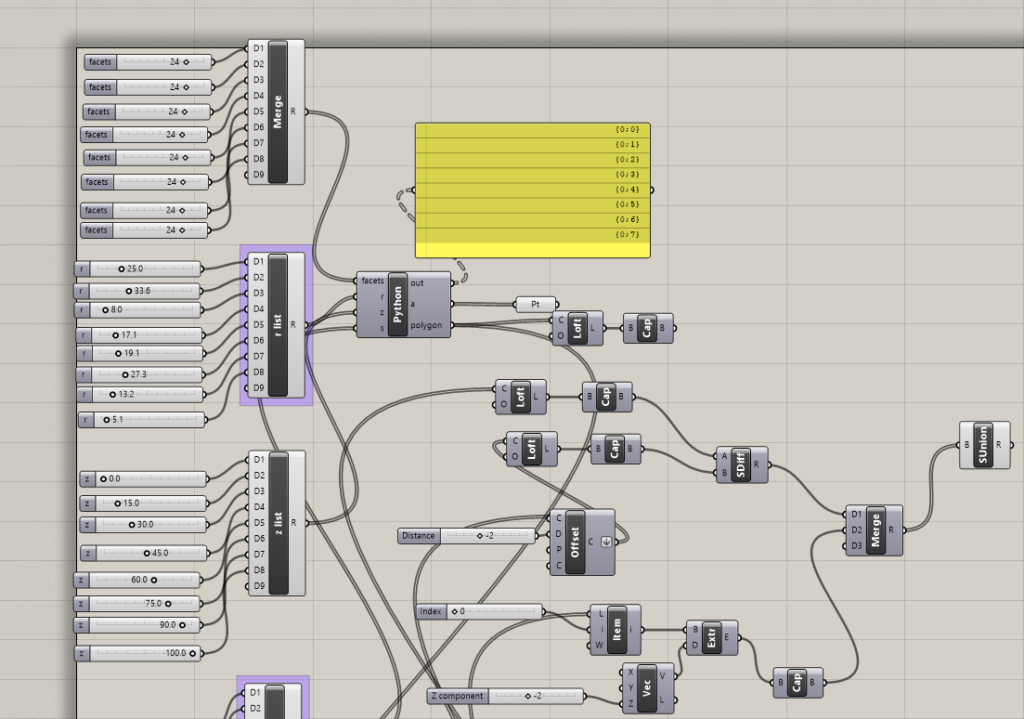
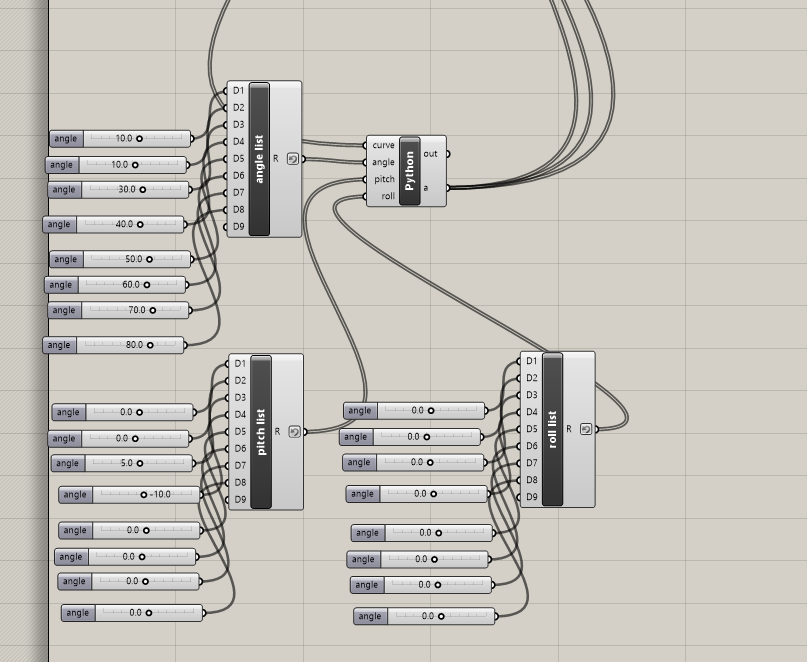
My first vessel was pretty simple I was playing around with the pitch and the changing of the number of facets and got this kind of goose neck looking vessel that I liked, Its not the most interesting piece but it being my first time doing an extended 3d print I wanted to get something out to test and see how it went. I had to re-level my bed, I must have moved it around while carrying it around but other than that the printing process was smooth with no issues.
My second vessel I wanted to try a more complex shape and went or a star I did this by creating a new function in my python script that had a facet % 2 check and changed the radius depending on the remainder. I liked how the waves on the side of the vessel overlapped a bit when I had changing number of facets between the stars. I didn’t do anything with the pitch or roll on this one because it made a bit of a mess of the waves on the side and produced holes in the side of the vessel. Again the printing process was smooth on this one no issues.
For my third vessel I again wanted to try a more complex shape. I made another function in my python script that had a similar idea to the star vessel but instead this time I check with facets % 4 this gave me 2 extra points to square of the edges of the star instead of being very pointed. Being mod 4 meant that my facets had to be much higher to get to this cog like shape. I really wanted to make this into a bit of a spiral upwards but I was having issues with the roll in my program and didn’t realize that I had just forgotten to convert it to radians until it was too late. This print process was also smooth with no issues.
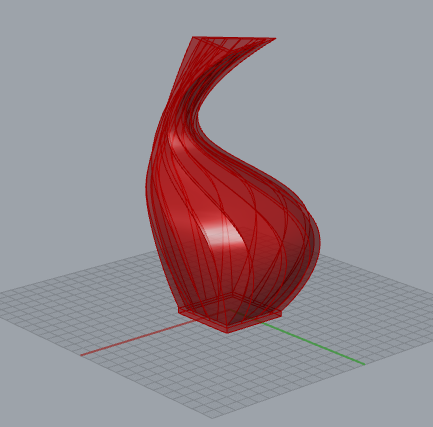
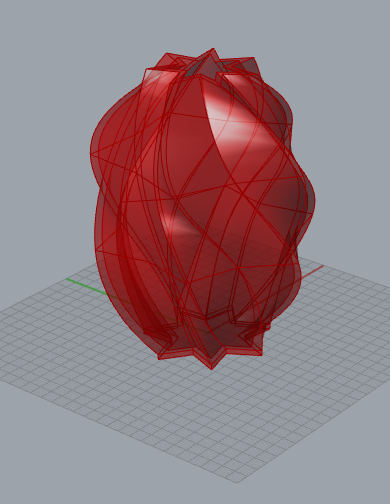
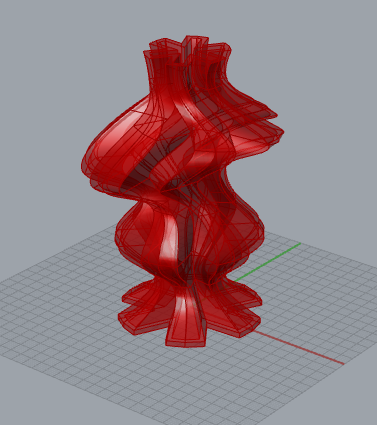
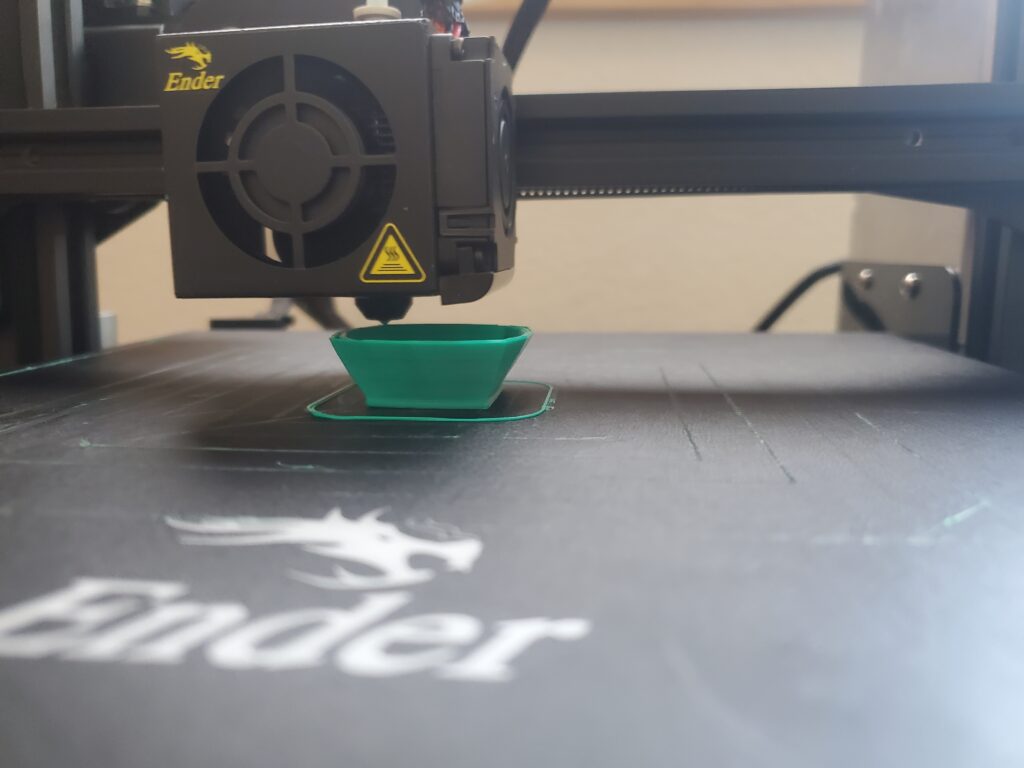
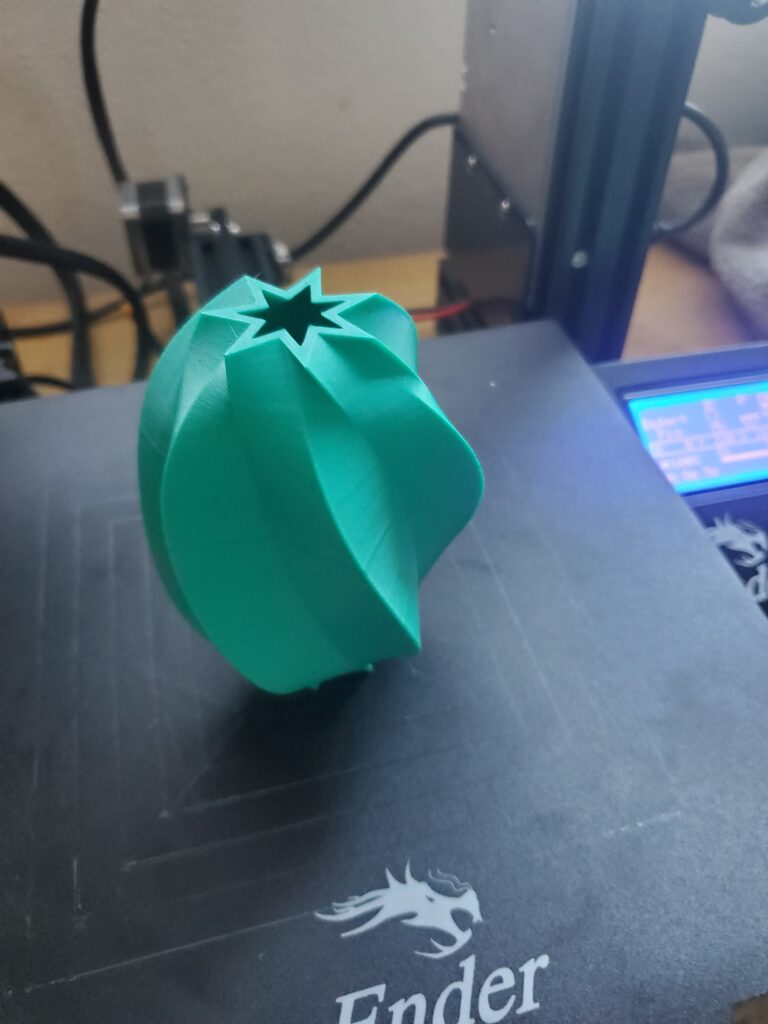
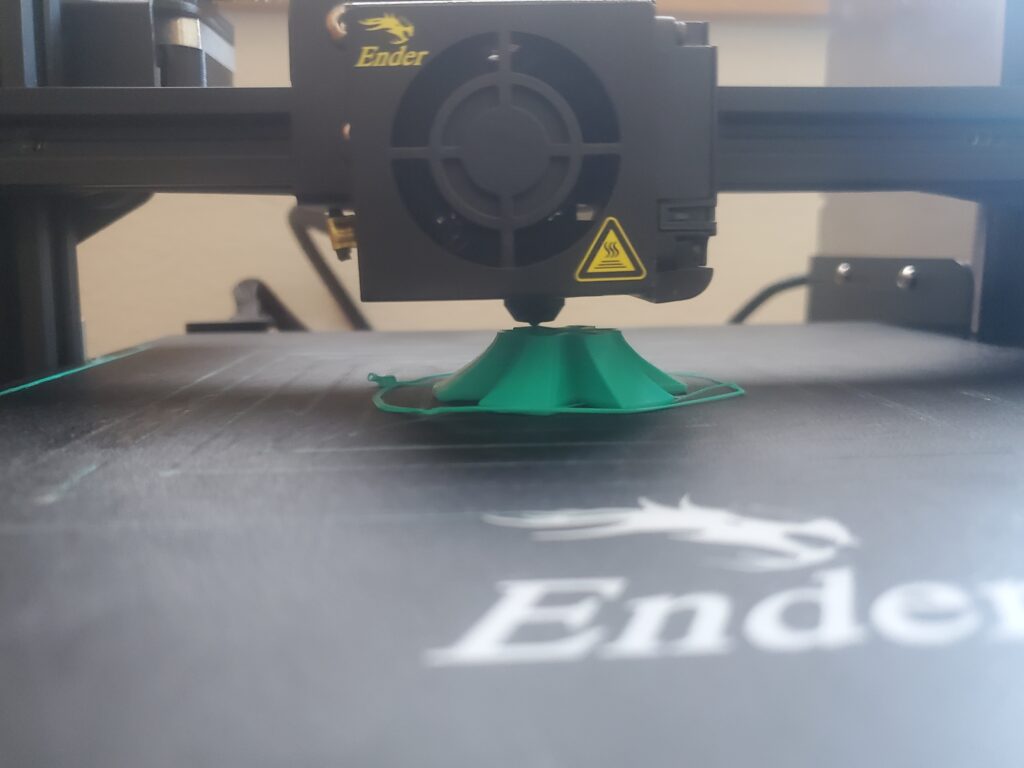
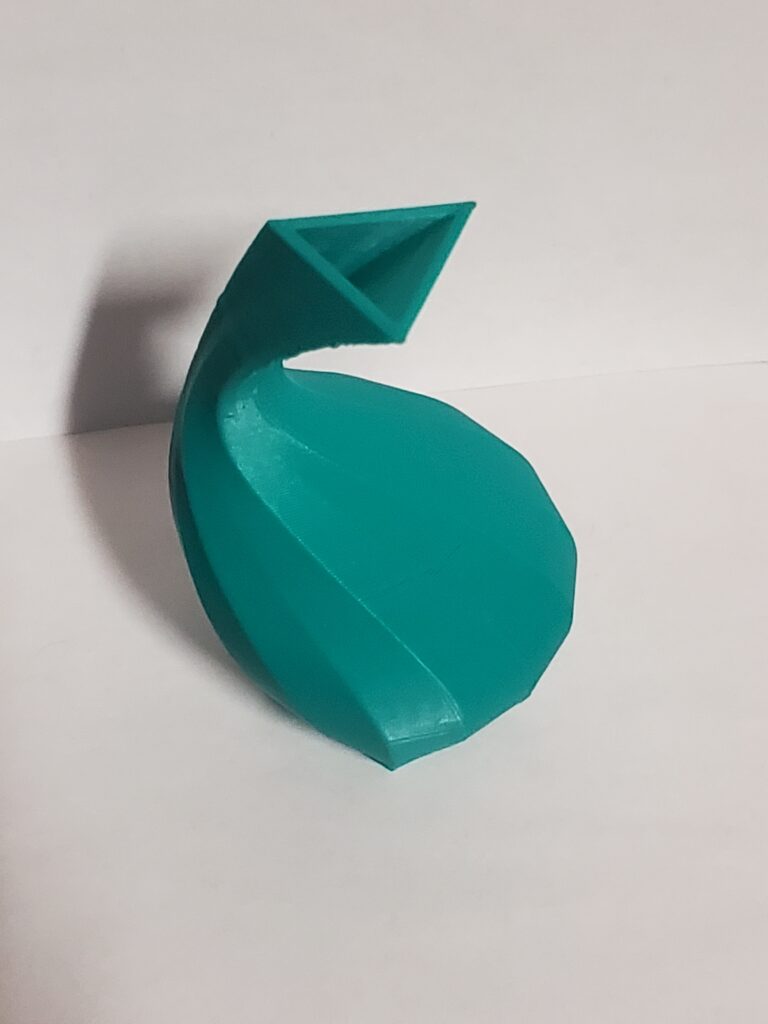
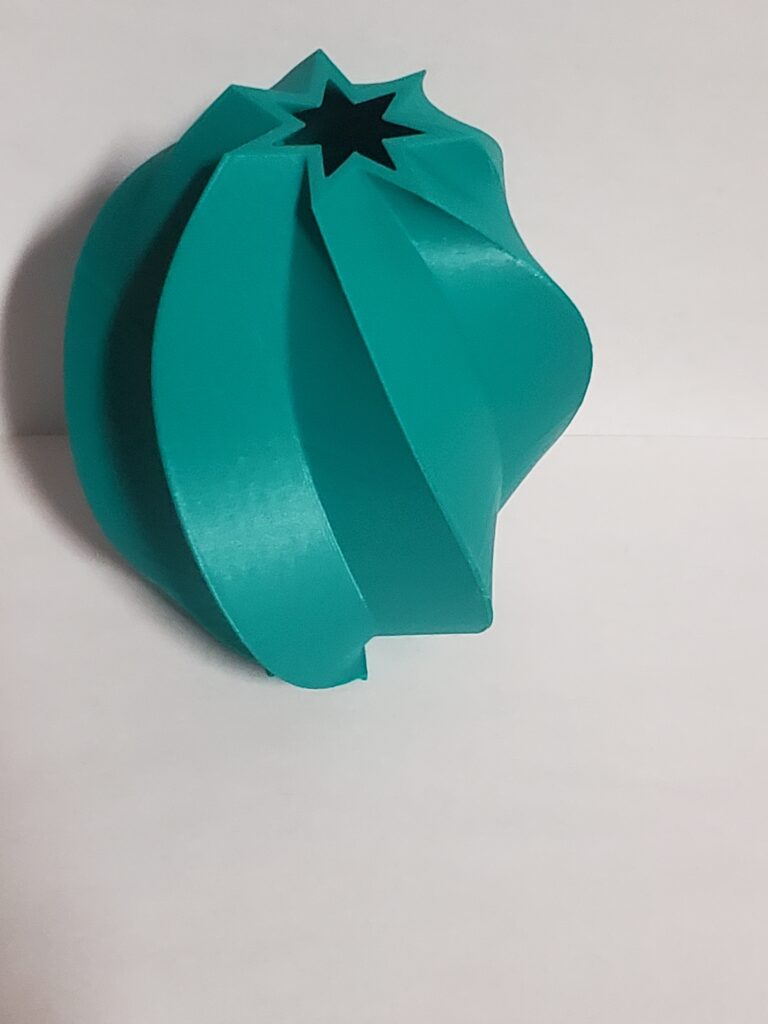
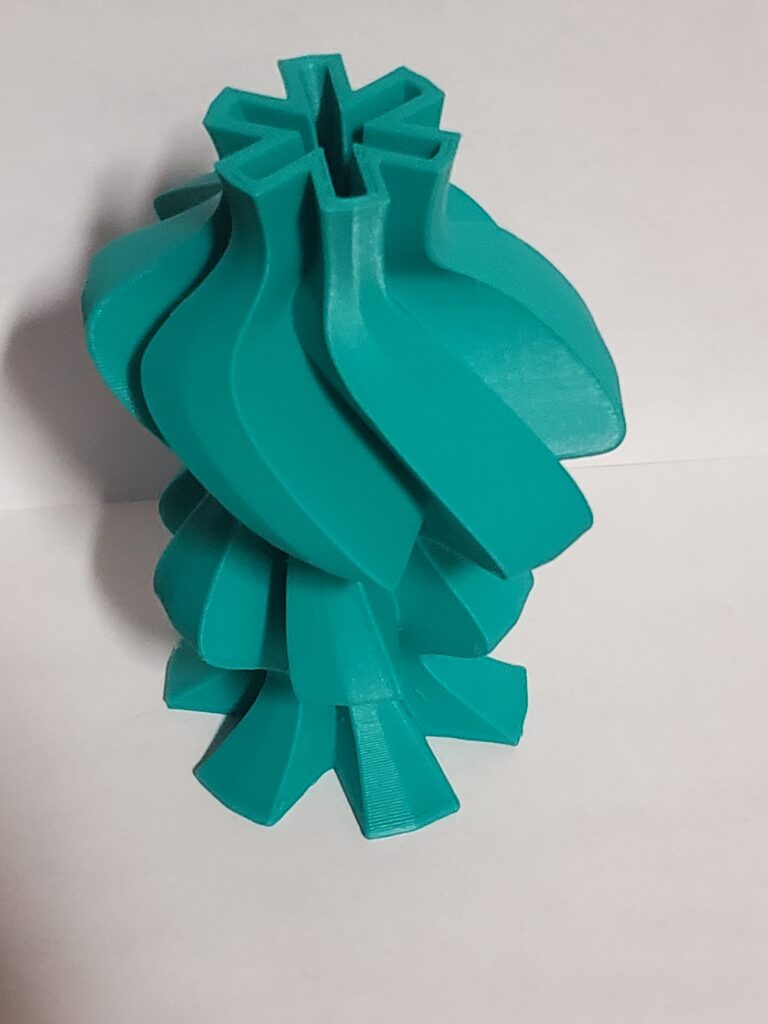
Reflection
Designing these objects with programming and 3d printing felt a bit restrictive at first until I got a bit more comfortable playing around with what is available. It feels very different from a traditional design process, for my first vessel especially I was just playing around with the different pieces of the program until I found a shape I found visibly appealing. When I’ve worked with clay or other more traditional art mediums in the past I think I had a better idea of what form I was trying to make before I started working. I think the advantage of this process are that you can find interesting forms that you might not have initially thought of. A disadvantage is that when you have something specific in mind it isn’t as easy to just make the form, at least for me, I had to do more trial and error before getting close to what I had in mind.
My first form I didn’t have an idea in mind I just experimented with the parameters until I found something I liked. The second and third I had an initial idea of what I wanted to do with the star shape and the cog shape but I was still playing with parameters in the end to find something I liked for the general structure of the the vessels. I don’t totally feel like I designed the forms, the process feels a little too formulaic. That’s not to say there isn’t some formulaic structure to other forms of art, but it feels a bit different having grasshopper and rhino fill in some of the steps of the process. I do feel like my sense of authorship is diminished because of the formulaic nature. I am certainly not the first person to use the equations that I used to make the shapes. But, the vessels wouldn’t exist if I hadn’t written the code and fiddled with all the parameters.
Awesome work Michael Robert!! I love how you ramped up the complexity as you went. The goose neck vessel is really beautiful and evocative. I also like that your walls were a little thicker. It makes your vessels look really stable and I’m sure it helped with the printing. It also is cool to see a nice clean shape at the top of your forms.
Hey Michel,
I think that your cog vessel turned out really amazing, I did something similar with modulo and I didn’t ever think about increasing that further to get more complex shapes out of it! I also went back to my rotating algorithm after the fact and realized I didn’t convert to radians either, resulting in the strange issues I was facing, whoops! Glad I wasn’t the only one haha. Great job with this, I like how your design process worked out!
HI Michel,
I loved the cog shaped vessel. I was delighted when I held it and it was an asterisk shape. All of you vessel were great but like I said I really liked you cog vase. It looks so graceful from the side and I loved that juxtaposed with the playful cog shape.